The Poodle dog has been around since at least the middle ages, probably originating in Germany (although several other countries claim it as their own, including France). The name Poodle comes from the German Pudel, meaning something like, to splash, which is where we get the word puddle from.
Although they were originally used as a retriever, fetching fallen waterfowl from lakes and rivers, Poodles are mostly companion dogs these days. This is something they excel at, as all Poodle owners will tell you. These amazing dogs are very affectionate, great with young kids, playful, good around strangers, highly intelligent, and easy to train.
But you’re here to find out about the black Toy Poodle, so let’s see what we can find out.
What Do Toy Poodles Look Like?
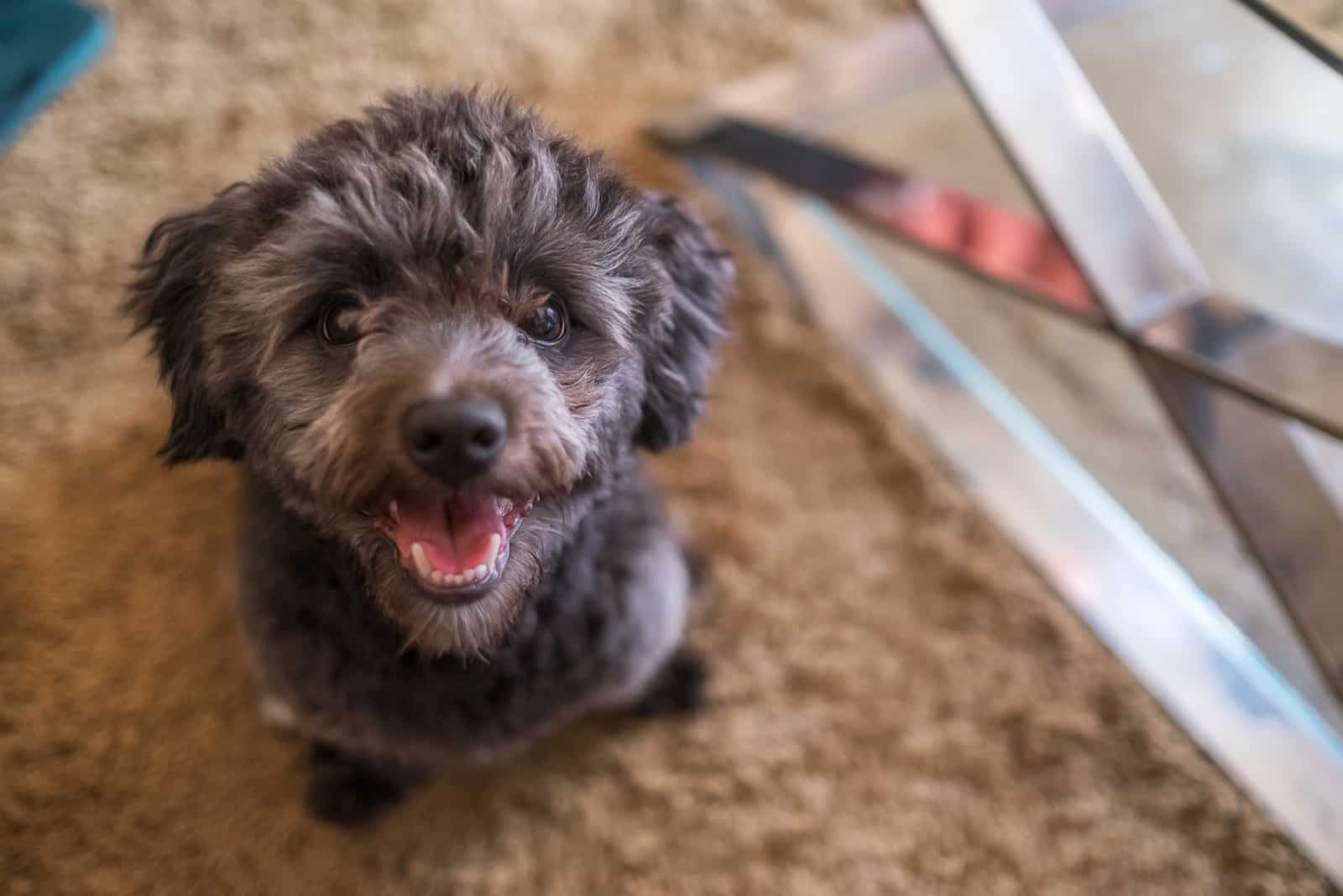
They are basically a small version of the Standard Poodle, and any deviation from this is a hint that you may be looking at a Poodle mix (for example, a Labradoodle, Goldendoodle, or Cockapoo) rather than a purebred dog. These crossbreeds are just as loveable as the Poodle itself, so be sure to check them out too.
So, your black Toy Poodle will look much like a scaled-down version of the black Standard Poodle.
Despite their cute teddy bear looks, there’s a touch of elegance about the Toy Poodle. They are tiny, no more than 10 inches at the withers, and they have their coats clipped in a wide range of styles, which often fools people into believing they are different breeds.
We’ll look at some of these styles in more detail further along.
The Poodle’s double coat is tightly curled and hardly sheds at all, though brushing is essential to avoid matting. Matted fur can be extremely painful to dogs and may even damage their skin, leading to infections.
Toy Poodles have an identical coat to their larger counterparts, and you’ll need to take good care of this with regular grooming. The good news is that, even though it’s a double coat, they hardly shed at all, and they don’t produce much dander, which makes them ideal for allergy sufferers.
The black Toy Poodle has beautiful dark eyes and black points (the nose, eye-rims, and toe-nails), which is probably why so many dog lovers find it so charming!
Black Toy Poodle Puppy
If you’re after a black Poodle dog, you may be disappointed to find that your jet-black pup suddenly starts to lighten as it gets older. Many dog breeds change color as they grow, which is just part of the fun of dog genetics.
Blue, silver, and true black Poodles are all born black, but the first two will begin to ‘clear’ as the pup develops. Blues are so convincing that they are often registered as black dogs! However, by the time they are one year old, you’ll see signs that the coat is fading. In silver Poodles, around 90% of the pigment is lost from the furry undercoat, while the topcoat retains most of its color. This gives the dog its beautiful silvery look.
To make sure you get a solid black Toy Poodle, you’ll need to speak to the breeder as they’re the expert. They won’t guarantee the exact color of your pup, as good breeders don’t generally breed for color, and puppy colors are notoriously difficult to predict. However, they should have the knowledge and expertise to tell whether a black puppy will stay black as it grows.
This highlights the need to only use trusted and reputable Toy Poodle breeders.
Black Toy Poodle Full Grown
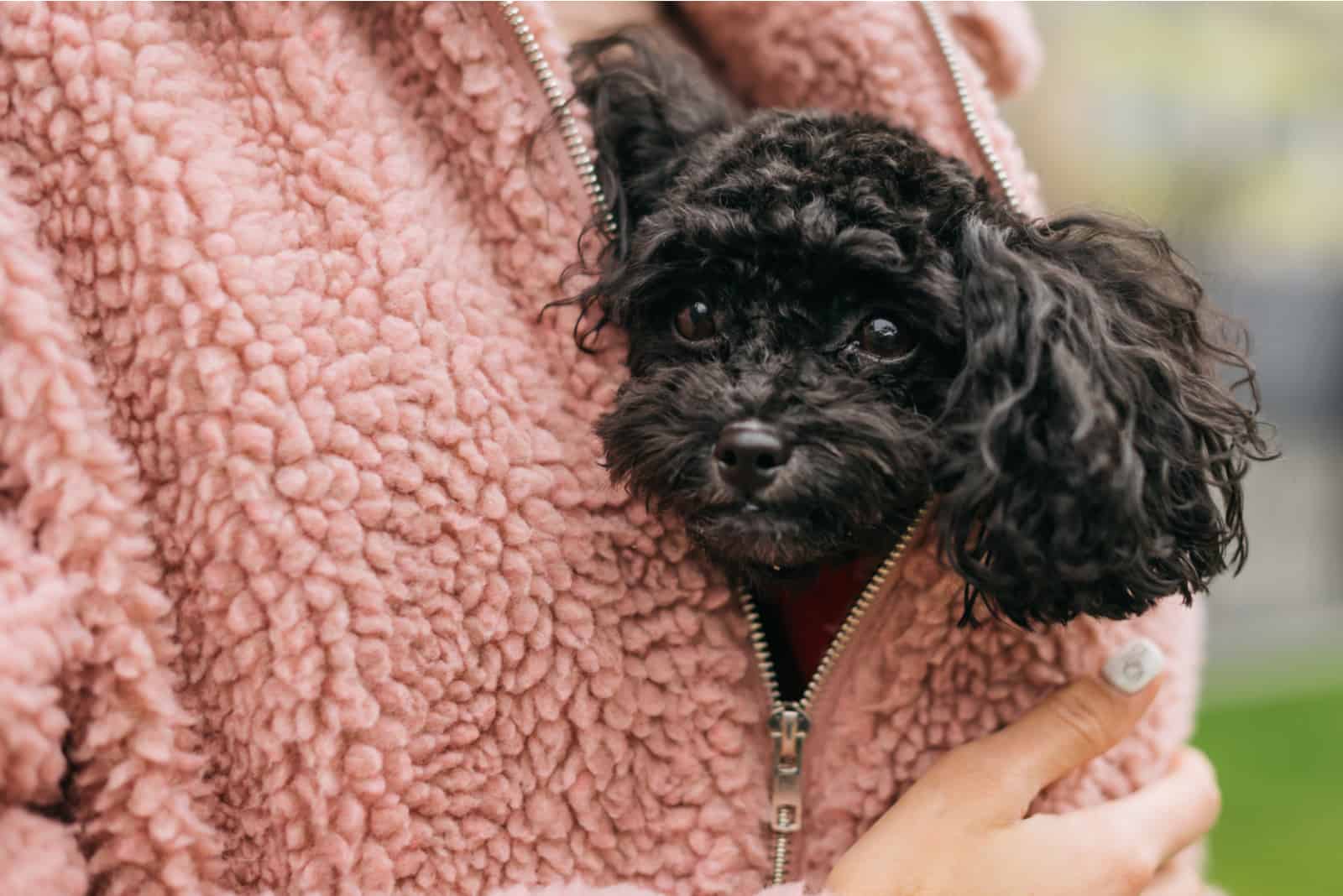
How big do Toy Poodles get? You won’t find any that are taller than 10 inches!
And in terms of weight, they’ll be between 4 and 6 pounds. That puts these little dogs in the same league as the average Chihuahua or Yorkshire Terrier.
Now, you might wonder how these figures can be so precise. You may say to yourself, surely some are taller than 10 inches and heavier than 6 pounds? You’d be right, but these fall into the Miniature Poodle class! Mini Poodles, just for comparison, weigh between 10 and 15 pounds and measure 10 to 15 inches at the shoulder.
Any toy dogs lighter than 4 pounds are within the teacup category, but this is a contentious issue (see the next section for further information).
Toy Poodle pups are at risk of hypoglycemia (low blood sugar levels), just like other small breeds of dogs. This is because they don’t have the energy reserves that adult dogs have, as their liver and pancreas (that control digestion and sugar balance) are not fully developed.
Pups that become hypoglycemic suffer from trembling, seizures, weakness, loss of appetite, lack of coordination, and lethargy. Primary hypoglycemia* often happens as a result of being too cold (which is why it’s a good idea to invest in a doggy coat!) or missing a meal. It can also be brought on by excessive exertion when the pup’s body can’t produce the energy it needs.
Thankfully, most pups grow out of this as they develop into full-grown dogs.
*Secondary hypoglycemia is caused by conditions like diabetes, Addison’s disease, liver disease, and parasites.
Teacup Black Toy Poodle
Small dog breeds have been in fashion for several years now, driven partly by the fact that celebrities and influencers are often seen carrying them around and also because they’re just so cute!
And the smaller they are, the more popular they become, which has led to the breeding of teacup dogs. While these tiny pooches are undeniably adorable, some of the methods used to produce them are unethical. As a result, these tiny dogs can face serious health issues during their lifetimes.
Very often, the runts of the litter are used, as these are the smallest pups. These dogs will usually have some kind of health defect that has caused them to be small. Some breeders also deliberately withhold essential nutrition from the pups, which stunts their growth.
The truth is that few breeders (and certainly not reputable ones) will advertise their pups as teacup Poodles. The black Toy Poodle is small enough already, and to purposely breed smaller pups is asking for trouble. Dog lovers should be very wary of any breeder who uses the term ‘teacup’ as a marketing ploy!
Ethical breeders will breed for health, temperament, and physical appearance. They will never deliberately attempt to produce puppies below 5 pounds in weight, which qualifies a dog as a teacup size. All of their dogs are purebred, whereas other breeders may try to cross a Poodle with a smaller breed to produce a teacup version.
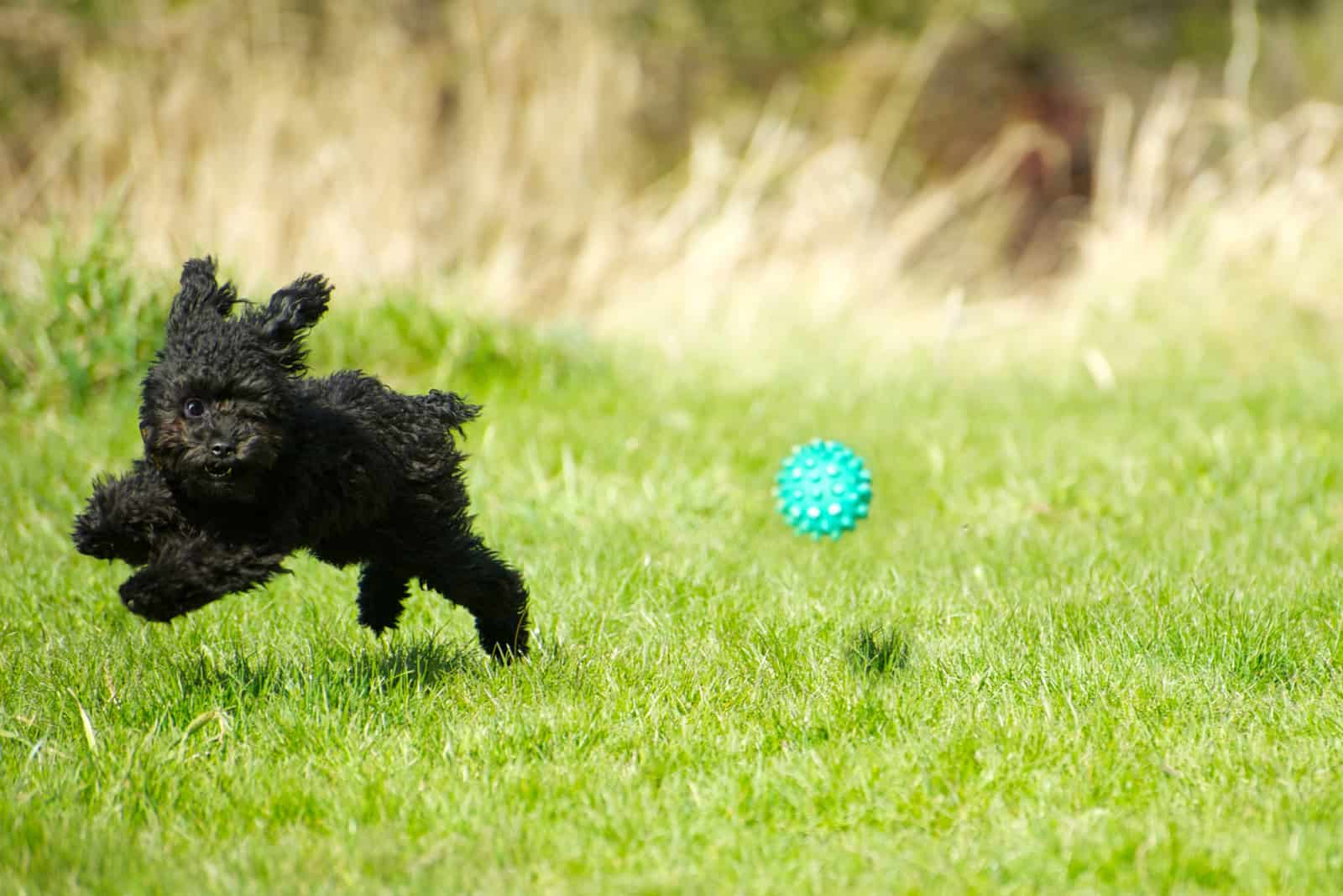
Teacup dogs, including the black Toy Poodle, can suffer from a range of health issues, such as:
• Heart disease
• Respiratory problems
• Low blood sugar (hypoglycemia)
• Water on the brain (hydrocephalus)
• Sliding kneecaps (luxating patella)
• Blindness
• Collapsing trachea
• Seizures
• Digestive problems
• Liver shunt (blood flow bypasses the liver so the dog is unable to naturally flush out toxins)
• Tooth and gum problems (baby teeth don’t drop out on their own and have to be extracted)
Aside from the pain and distress to the pup, as well as that some of these conditions can be fatal, your finances will take a beating from the expense of fixing these problems. For example, the average cost of liver shunt treatment is $6,000.
It’s clear that the deliberate breeding of teacup dogs is unwise, which is why organizations like the American Kennel Club (AKC) don’t recognize them. Reputable breeders may sell pups that are smaller than usual, but only if they happen naturally.
Any breeder claiming to have AKC teacup dogs of any breed is being dishonest.
You may also see the term tiny toy, which is really another way of saying teacup. The best advice is to stick with the official terms and sizes, as you stand a better chance of having a healthy pup!
What Is The Rarest Toy Poodle Color?

Although the AKC only officially recognizes 11 coat colors for the Poodle, there are at least thirty-one different Poodle colors.
Out of all these, people say that blue is the rarest, but apricot is the real winner. It is caused by a recessive gene (known as the Rufus gene) that produces a faded version of the red coat that almost resembles a cream color.
Red Toy Poodles are also pretty rare, again linked to the Rufus gene but without the fading.
Another color that’s not seen often is the Parti Poodle, with its striking black and white coat. They’re not as rare as the apricot version, but they are less commonly seen than the pure black or pure white Poodle. Even so, they have become quite popular in the last decade.
The subject of dog coat color genetics causes much confusion, and there’s a lot of misinformation spread around on the internet. Even the experts aren’t sure how it all works, and once people accept certain ideas, they tend to take them to heart.
As a result, you hear all kinds of theories about different colors being associated with certain health conditions, sometimes without any scientific foundation. For example, some people claim that red Toy Poodles may be prone to behavioral problems or health issues. Others say that all light-colored dogs are prone to deafness or skin complaints.
While there’s an element of truth to the last claim, it’s by no means set in stone. Many white or cream dogs live long, healthy lives!
While we’re on this subject, we should mention that black Toy Poodles (and dark-colored Standard Poodles) seem to have a heightened risk of squamous cell carcinoma of the digit (SCCD), a kind of cancer that causes bone disease in the toes. This one has experts stumped, as they don’t really understand why this is the case.
If caught early, this can be treated, but as with many cancers, it is rarely cured completely.
Black Toy Poodle Haircuts
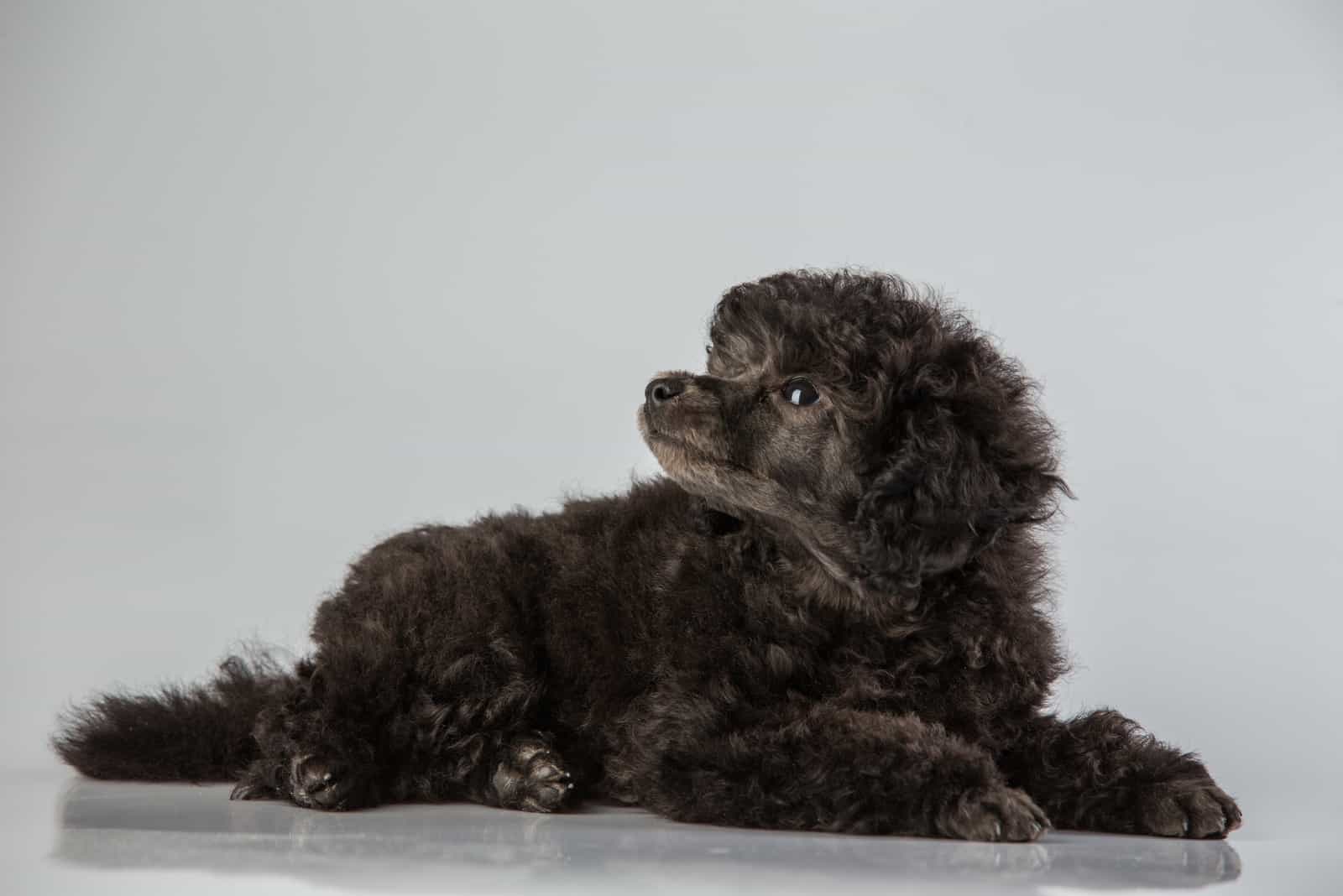
You’ve probably seen Poodles at dog shows, with all kinds of weird and wonderful haircuts.
Some look cool, while others look fussy and a little ridiculous. However, they originally had a practical purpose, allowing the dog freedom of movement in its powerful muscles without exposing too much flesh to the cold water as they splashed around in rivers and lakes.
Even though Poodles are most likely to be a pet rather than an aid to hunters these days, the tradition of Poodle clipping continues. It’s up to you how you style your fur baby, but remember that your black Toy Poodle will get cold really quickly in winter, so shaving large areas is perhaps not a great idea.
Likewise, in summer, you need to ensure that your Toy Poodle dog is protected from the harsh sunlight.
There are several Poodle haircuts to try:
• The lion cut
• The city and county cut
• The English saddle cut
• The cupcake cut
• The puppy cut
• The summer cut
• The teddy bear cut
This last one is probably the most popular for small Poodles, including your black Toy Poodle, as it gives that adorable look that so many people love. The hair is left 1 to 2 inches long all across the body and the face, giving a rounded look. This style will need to be carefully maintained, with a trip to the groomer every 6 to 8 weeks.
How Much Do Poodles Cost?
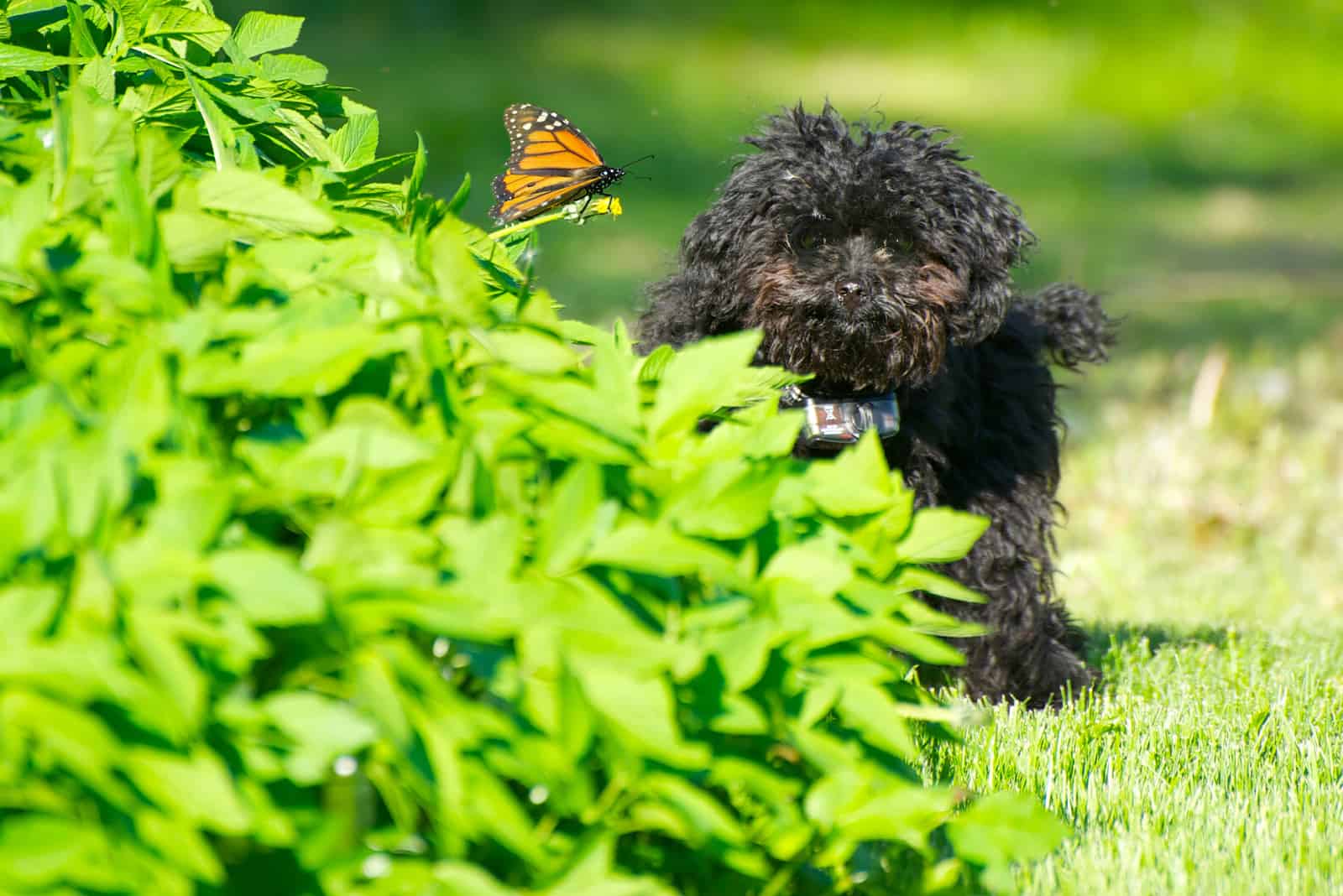
On average, you’ll pay between $1,000 and $2,000.
However, you could pay as little as $500 or as much as $4,000, maybe more! It all depends on the size and color of your Poodle, as well as where you get it from.
Let’s look at approximate prices according to size:
• Toy Poodle $1,200 to $4,000
• Miniature Poodle $1,000 to $2,000
• Standard Poodle $500 to $1,500
These prices will vary in different locations, and in general, dog lovers in northern states will pay more. The breeder’s reputation has a bearing on the price, as will the amount of health testing they use. If you think that these prices are too high, keep in mind that it can cost a breeder over $5,000 to produce a single litter of pups.
Read Next: 9 Poodle Breeders In Wisconsin You Can Get Your Poodle From
In short, you get what you pay for! A Standard Poodle could cost you $500 or $600, but you would be wise to question why it’s so cheap. Puppy mills, backyard breeders, and pet stores often charge lower prices to try and get rid of their stock as quickly as possible. As well as being bred and raised in poor conditions, these dogs won’t be health tested and may well have behavioral problems as the pups won’t have been socialized at all.
The color of your pup may also affect the price, but once again, you need to be wary of breeders who use this as an excuse to hike their prices.
You will also pay more for a dog that’s registered with the kennel club (AKC), although this is likely to be limited registration that doesn’t allow you to breed the dog, and most good breeders will include a spay/neuter agreement.
In summary, the average price for a black Toy Poodle is around $2,000. Choose the breeder with care, making sure to check them out thoroughly.
What To Take Away

Photo from: @milothebabyboy
The black Toy Poodle is something special. It is unbelievably cute and will be your best friend for life.
As always, there are several important things to keep in mind before you get your pup:
• Pick a good, reputable breeder! This is essential if you want a healthy pup that has been treated well. Good breeders will start the socialization process and use health testing on the parents. Expect to pay around $2,000 for your pup, though you’ll pay more for show-quality dogs with championship bloodlines.
• Invest in your pup’s health. Only use good quality dog food to ensure that they get the best nutrition. This will help their development and boost their chances of living a good long life. These little dogs can live as long as 18 years!
• Avoid anything labeled as a teacup dog. Few reputable breeders will use this term, and the AKC (and other kennel clubs) do not endorse or recognize them. Breeding small dogs is an art that takes many years and a lot of expertise. Unscrupulous breeders play on the fact that the public wants tiny dogs, and they’ll breed runts or crossbreeds to feed this fad.
• Watch out for hypoglycemia. If your pup exerts itself too much, gets cold, or misses a meal, it might have low blood sugar, which can be dangerous. In an emergency, you can use sugar water, corn syrup, or honey to boost your dog’s sugar levels. It’s wise to keep a source of glucose handy!
• Use a good hairstyle. The teddy bear cut is a good choice for Toy Poodles as it keeps them covered, with no exposed areas. It also looks super cute! It’s up to you, but keep in mind that anything too complex will require regular grooming by an expert. Shaved areas can cause your pup to get cold or become sunburned.
• Exercise and mental stimulation are essential. These cute dogs don’t just have pretty faces – they are seriously intelligent bundles of energy! You’ll need to make sure they have enough exercise and mental stimulation, or they’ll get bored and frustrated. Your home will suffer as a result because they’ll take it out on your sofa, carpet, and whatever they take a fancy to. Three twenty-minute sessions a day, a mixture of play and walks, should suffice, but this should include things to keep their minds occupied.
• Regular health checks. You should book regular visits to the vet to keep on top of any health problems. Poodles are particularly prone to cancer, so watch out for any telltale signs. If caught early, there’s a good chance this can be treated.
Now that you know a little more about the black Toy Poodle, you’re ready to go get one!
Read Next: Toy Poodle Breeders In Ontario: PupVine’s Top 7!















